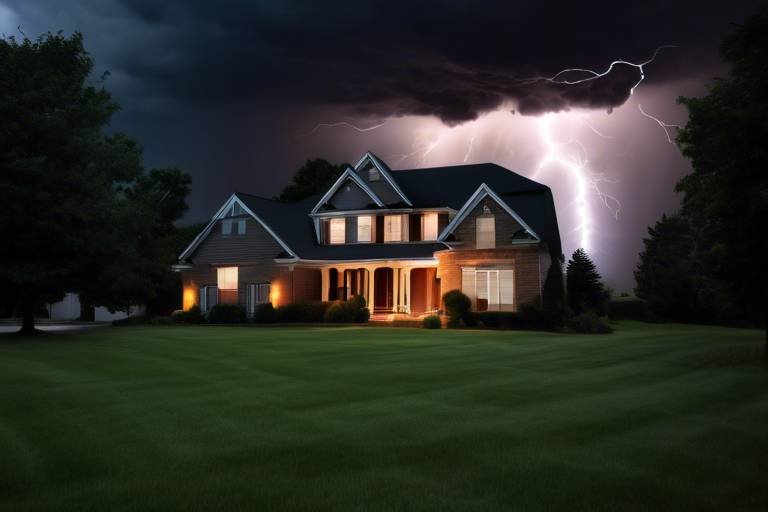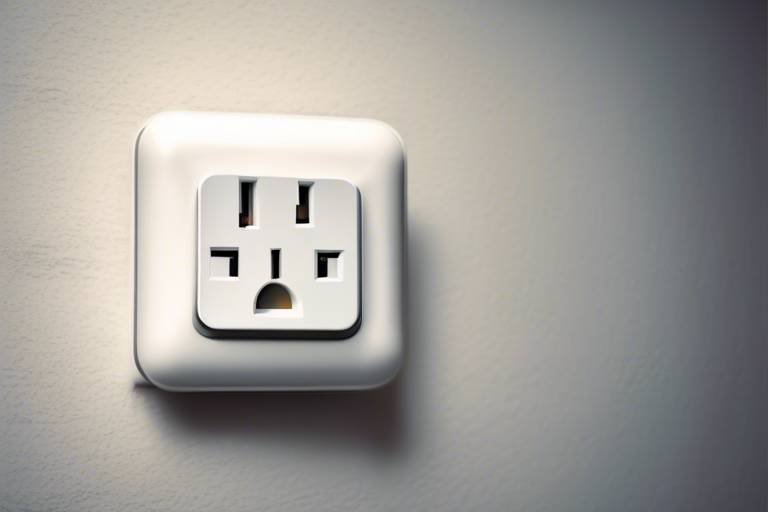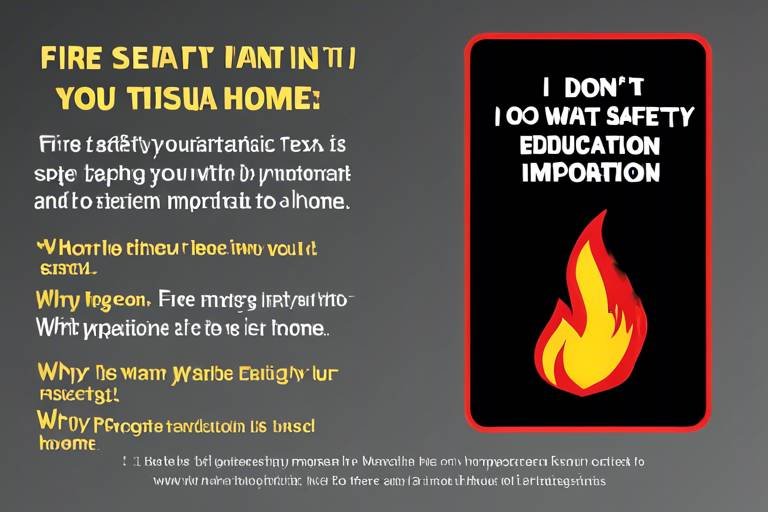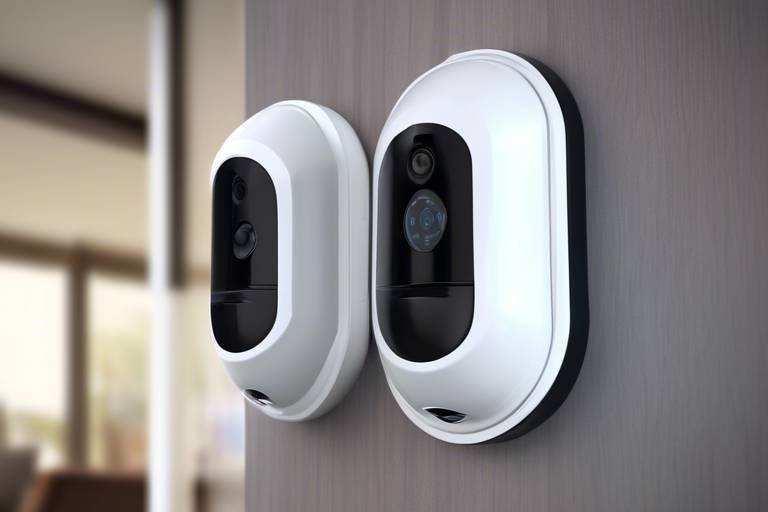How to Protect Your Home from Lightning Strikes
When it comes to thunderstorms, most of us think about the rain, wind, and maybe a little bit of thunder rumbling in the distance. But have you ever stopped to consider the sheer power of lightning? This natural phenomenon is not just a spectacular light show; it can cause serious damage to your home and pose risks to your safety. In fact, lightning strikes can lead to fires, power surges, and even physical injuries. That’s why understanding how to protect your home from lightning strikes is crucial. So, let's dive deep into some effective strategies that can shield your sanctuary from this electrifying threat.
Before we jump into protection methods, it’s important to grasp what lightning is and how it behaves. Lightning is a massive discharge of electricity that occurs during a storm when there is a buildup of electrical charges in the atmosphere. This discharge can reach temperatures hotter than the surface of the sun and travel at speeds of up to 60,000 miles per hour. Imagine a bolt of lightning striking your home—it can create a shockwave that causes structural damage, ignites fires, and disrupts electronic devices. Knowing the nature of lightning will help you appreciate the importance of taking protective measures.
One of the most effective ways to protect your home from lightning is by installing lightning rods. These devices are designed to attract lightning and safely direct it into the ground, away from your home. Think of them as a kind of insurance policy against the unpredictable forces of nature. When lightning strikes a rod, it travels down a copper wire and dissipates safely, preventing damage to your roof and electrical systems. But how do you go about installing one? Let’s break it down.
There are various types of lightning rods available, each with its own set of benefits. Traditional lightning rods are simple metal rods that have been used for centuries, while modern options may include advanced technology that enhances their effectiveness. When choosing a lightning rod, consider factors such as:
- Material: Copper and aluminum are common choices, each with its own advantages.
- Design: Some rods are designed to blend in with your roof, while others stand out.
- Height: Taller rods can provide better coverage.
The material of your lightning rod is crucial for its effectiveness. Copper rods are renowned for their conductivity and durability, while aluminum rods are lighter and often more cost-effective. However, copper rods can withstand harsher weather conditions and have a longer lifespan. When selecting a material, consider your local climate and how much you’re willing to invest in protection.
Optimal placement is key for lightning rods. They should be installed at the highest point of your home, ideally above the roofline, to maximize their effectiveness. The height of the rod is also important; taller rods can protect a larger area. A general rule of thumb is that the rod should extend at least 10 feet above the highest point of your structure. This way, it can effectively draw lightning strikes, keeping your home safe.
But wait, there’s more! It’s not just about having a lightning rod; you also need a grounding system. Grounding systems work hand in hand with lightning rods to ensure that the electrical charge from a strike is safely dissipated into the earth. Proper grounding involves burying conductive materials, like copper cables, deep into the ground. This creates a low-resistance path for the electrical energy to travel, minimizing the risk of damage to your home and its occupants.
Now that we’ve covered lightning rods, let’s talk about surge protectors. You might be wondering, “How do these little devices protect my home?” Well, when lightning strikes, it can create a power surge that travels through your electrical system, potentially frying your appliances and electronics. Surge protectors act like a shield, absorbing excess voltage and preventing it from reaching your devices. They are a vital part of any lightning protection strategy.
When selecting a surge protector, it’s important to consider your home’s electrical needs. Look for surge protectors that offer:
- Joule Rating: The higher the joule rating, the more energy it can absorb.
- Response Time: A faster response time means better protection.
- Number of Outlets: Ensure it has enough outlets for your devices.
For maximum effectiveness, it’s essential to install surge protectors correctly. Plug them directly into wall outlets rather than using extension cords, and ensure they are placed in locations where you typically use your electronics. Regularly check your surge protectors for signs of wear and replace them as needed to maintain optimal protection.
Q: Can I install lightning rods myself?
A: While it is possible to install lightning rods yourself, hiring a professional is recommended to ensure proper placement and grounding.
Q: Are surge protectors necessary if I have lightning rods?
A: Yes! Lightning rods protect your home from direct strikes, while surge protectors safeguard your electrical systems from power surges.
Q: How often should I check my lightning protection system?
A: It’s a good idea to inspect your lightning rods and grounding systems annually, especially before storm season.

Understanding Lightning Strikes
When we think of thunderstorms, we often picture dramatic flashes of light illuminating the sky, but those flashes are more than just a pretty sight—they're powerful forces of nature. Lightning strikes are electrical discharges that occur during storms, and they can have devastating effects on homes and the environment. Understanding the nature of lightning is crucial for protecting your home. Did you know that a single lightning bolt can contain up to one billion volts of electricity? That's enough energy to power a small town for a day!
So, what causes lightning? It all starts with the buildup of static electricity in storm clouds. As these clouds move and collide, they create a separation of charges, with positive charges accumulating at the top and negative charges at the bottom. When the difference in charge becomes too great, a discharge occurs, creating a lightning bolt. This phenomenon can strike anywhere, but certain conditions make your home more vulnerable. For instance, tall structures, trees, and even metal objects can attract lightning, increasing the risk of a strike.
Now, you might be wondering, “How can lightning affect my home?” Well, the consequences can range from minor inconveniences to catastrophic damage. Here are some potential impacts:
- Fire Damage: Lightning can ignite fires, especially in wooden structures.
- Electrical Damage: A lightning strike can cause power surges that damage your electrical systems and appliances.
- Structural Damage: The force of a lightning strike can physically damage your roof or walls.
Given these risks, it’s essential to take protective measures seriously. You wouldn’t drive a car without a seatbelt, right? Likewise, don’t leave your home unprotected against lightning strikes. By understanding how lightning works and the potential risks it poses, you can better prepare your home for the next storm. In the following sections, we’ll delve into practical strategies, such as installing lightning rods and surge protectors, that can help keep your home safe during thunderstorms.

Installing Lightning Rods
When it comes to protecting your home from the fierce wrath of nature, installing lightning rods is a crucial step many homeowners overlook. These devices are not just a precaution; they are a proactive measure that can significantly reduce the risk of lightning damage. Imagine your home as a fortress, and lightning rods as the towering walls that keep the invaders at bay. But how do they work, and what should you consider when installing them? Let's dive into the essential aspects of lightning rod installation.
First off, it's important to understand that lightning rods function by providing a safe path for electrical charges to travel during a storm. When lightning strikes, the rod captures the bolt and directs it safely into the ground, minimizing the risk of fire or electrical damage to your home. This process is akin to having a safety net in place when walking a tightrope—it's all about creating a secure environment for you and your loved ones.
Now, let's talk about the installation process. While you might be tempted to take on this task yourself, it's best left to the professionals. A qualified electrician or lightning protection specialist will ensure that the rods are installed correctly and in compliance with local codes. They will assess your home’s architecture and determine the best locations for the rods, which is crucial for maximizing their effectiveness. Typically, rods should be placed at the highest points of your roof, such as chimneys or gables, to intercept lightning strikes before they reach your home.
In addition to the placement, the height of the lightning rods is equally important. The general rule of thumb is that the rods should extend at least 10 feet above the highest point of your building. This height ensures that the rod is the preferred path for lightning, significantly reducing the chances of a strike hitting your home directly. Think of it this way: if you were a lightning bolt, would you rather hit a tall, shiny metal rod or a wooden roof? The choice is obvious!
Furthermore, grounding systems are an essential component of the installation process. A well-designed grounding system will ensure that the electrical charge from a lightning strike is effectively dissipated into the earth. This involves burying a copper or aluminum conductor in the ground, which connects to the lightning rod. The grounding system acts like a safety valve, redirecting the energy away from your home and into the earth. Without a proper grounding system, the effectiveness of your lightning rods can be severely compromised.
In summary, installing lightning rods is a critical step in safeguarding your home from lightning strikes. With the right placement, height, and grounding system, you can rest easy knowing that you've taken significant measures to protect your property. Remember, when it comes to lightning protection, it’s always better to be safe than sorry!
- Do I need a lightning rod if I live in a low-risk area? Even in low-risk areas, lightning can strike. Installing a lightning rod is a proactive measure that can provide peace of mind.
- How much does it cost to install a lightning rod? The cost can vary based on your home's size and the complexity of the installation. On average, homeowners can expect to pay between $1,500 and $3,000.
- Can I install a lightning rod myself? While DIY projects are appealing, it’s best to hire a professional to ensure proper installation and compliance with safety standards.
- How often should I have my lightning protection system inspected? It’s advisable to have your system inspected every few years or after severe storms to ensure it remains effective.

Types of Lightning Rods
When it comes to protecting your home from the fierce wrath of lightning, choosing the right type of lightning rod is crucial. But did you know that there are several types of lightning rods available, each designed to cater to different needs and preferences? Understanding these options can empower you to make an informed decision that will keep your home safe. Let's dive into the various types of lightning rods and how they function to safeguard your property.
First off, we have the traditional lightning rods, often made from copper or aluminum. These rods are simple yet effective, designed to intercept lightning strikes and direct them safely into the ground. Their classic design is still widely used today due to their reliability and proven track record. However, traditional rods may not always blend seamlessly with modern architectural designs, which brings us to the next option.
Then we have the modern lightning protection systems, which incorporate advanced technology to enhance safety. These systems often feature multiple rods and advanced grounding techniques, ensuring maximum protection. They can be more aesthetically pleasing, often designed to integrate with your home’s architecture while providing superior performance. This means you don’t have to sacrifice style for safety!
Another interesting category is the air terminal systems. These systems utilize a network of rods placed strategically around your property, creating a protective umbrella effect. By dispersing the electrical charge over a larger area, these systems can minimize the chance of a direct strike. They are particularly beneficial for larger buildings or properties with extensive landscaping.
For those looking for something even more cutting-edge, active lightning rods are an exciting option. These rods use a small amount of energy to create an ionized path in the air, which can help guide lightning strikes away from the structure. While they may be more expensive, the added layer of protection can be worth the investment, especially in areas prone to frequent thunderstorms.
In choosing the right type of lightning rod for your home, consider factors such as your local climate, the architecture of your home, and your budget. It's also essential to consult with a professional who can assess your specific needs and recommend the best solution. Remember, investing in the right lightning rod is like putting on a safety helmet before riding a bike; it's a small step that can make a huge difference in protecting what matters most.
In summary, whether you opt for traditional rods, modern systems, air terminal systems, or active lightning rods, each type has its own unique benefits. Understanding these options will not only help you choose wisely but also give you peace of mind during stormy weather.
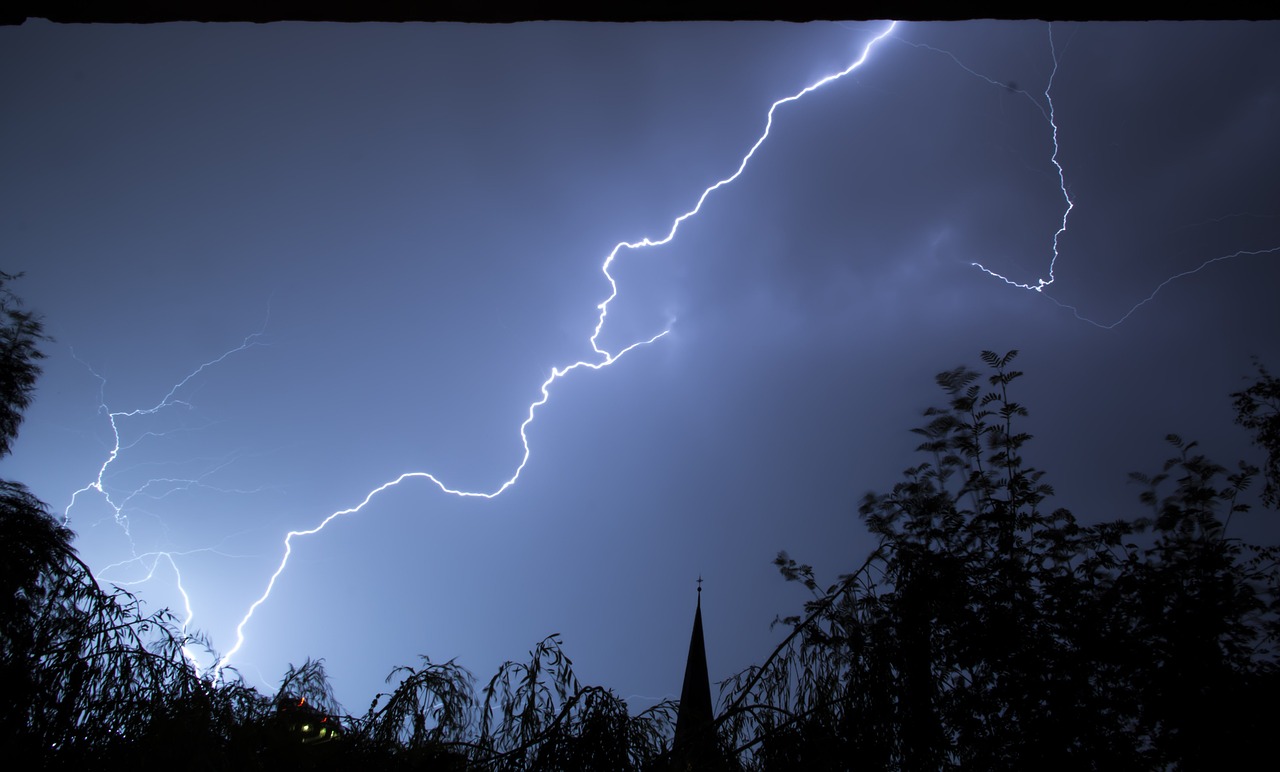
Material Considerations
When it comes to protecting your home from lightning strikes, the material used in lightning rod construction plays a crucial role. The effectiveness of a lightning rod is not just about its design but also about what it’s made from. Common materials include copper, aluminum, and stainless steel, each with its own unique properties that affect durability and conductivity.
Copper is often considered the gold standard for lightning rods due to its excellent conductivity and resistance to corrosion. It’s like the superhero of materials, providing a reliable path for lightning to follow. However, copper rods can be more expensive than other options, which might deter some homeowners.
On the other hand, aluminum is a lightweight and cost-effective alternative. While it doesn’t conduct electricity as efficiently as copper, it still offers a good level of protection. Think of aluminum as the trusty sidekick—it's not the main hero, but it can still get the job done without breaking the bank. It's also worth noting that aluminum is less prone to corrosion than copper, making it a viable option in certain environments.
Then, we have stainless steel, which is known for its strength and resistance to rust. While it may not conduct electricity as well as copper, its durability makes it a solid choice for areas that experience extreme weather conditions. If your home is in a location with high winds or heavy rain, stainless steel could be the material that stands the test of time, much like a sturdy umbrella that protects you from the storm.
When selecting a lightning rod, consider the environmental conditions of your area. For instance, if you live in a coastal region with salty air, corrosion resistance becomes a top priority. In such cases, aluminum or stainless steel might be the better options. Additionally, think about the installation location. A rod placed on a rooftop will face different challenges than one installed on a pole, so the material must be able to withstand those conditions.
In summary, choosing the right material for your lightning rod is essential for ensuring maximum protection for your home. Whether you opt for the conductivity of copper, the affordability of aluminum, or the durability of stainless steel, each material has its own advantages and drawbacks. It's like picking the right tool for a job—understanding the strengths and weaknesses of each option will help you make an informed decision that best suits your needs.
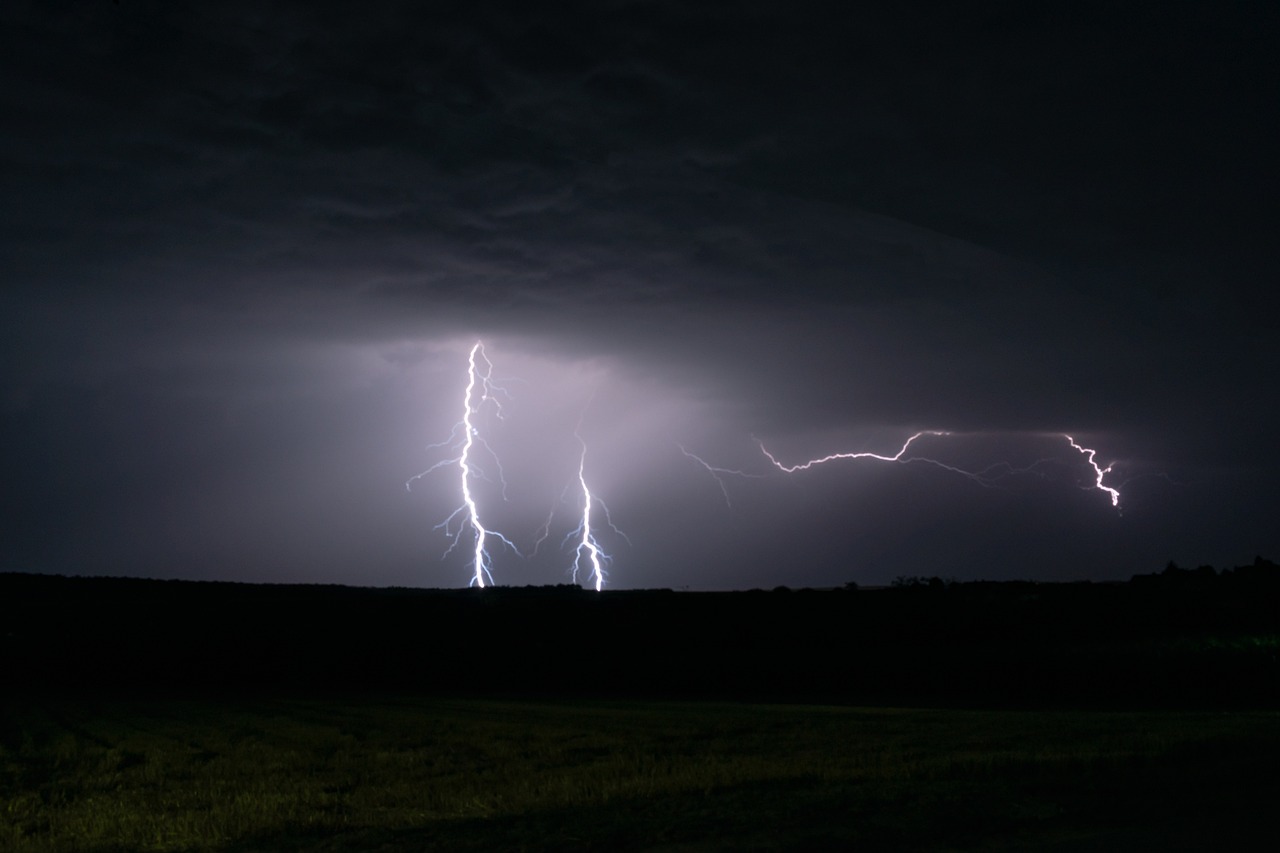
Placement and Height
When it comes to protecting your home from lightning strikes, the placement and height of your lightning rods are crucial factors that can make all the difference. You might think of a lightning rod as a tall guardian standing watch over your home, ready to intercept any wayward bolts from the sky. But how do you ensure that this guardian is positioned effectively? First off, it’s essential to install the lightning rod at the highest point of your home. This could be the roof or any other elevated structure, as lightning naturally seeks the highest point when striking. Think of it like a game of "king of the hill"—the higher you are, the more likely you are to get noticed!
Moreover, the ideal height for a lightning rod should generally be at least 10 feet above the highest point of your home. This extra elevation helps to create a larger protective zone, reducing the chances of a lightning strike hitting your property directly. In addition, the rod should be placed in a location that is free of obstructions, such as trees, antennas, or other structures that could interfere with its effectiveness. If a lightning rod is surrounded by taller objects, it may not be able to perform its job effectively, and you may find yourself in a precarious situation during a thunderstorm.
Another important aspect to consider is the distance from the rod to the ground. The lightning rod should be connected to a grounding system that effectively dissipates the electrical energy into the earth. This grounding system should ideally be installed within 10 feet of the lightning rod, and the grounding wire must be as short and straight as possible to minimize resistance. If the grounding system is poorly designed or installed, it may not provide adequate protection, leaving your home vulnerable. So, it’s like having a safety net—if it’s not properly placed, it won’t catch you when you fall!
To summarize, here are some key points to remember regarding the placement and height of lightning rods:
- Install the rod at the highest point of your home.
- Ensure it is at least 10 feet taller than the surrounding structures.
- Keep it free from any obstructions that could interfere with its effectiveness.
- Connect it to a grounding system within 10 feet for optimal protection.
By paying attention to these details, you can significantly enhance the protective capabilities of your lightning rod, making your home a safer place during thunderstorms. Remember, it’s not just about having a lightning rod; it’s about having it placed and installed correctly to truly safeguard your property.
Q: How do I know if my lightning rod is installed correctly?
A: Ensure that it is at the highest point of your home, at least 10 feet taller than surrounding structures, and connected to a proper grounding system.
Q: Can I install a lightning rod myself?
A: While DIY installations are possible, it's recommended to hire a professional to ensure proper placement and compliance with safety standards.
Q: How often should I inspect my lightning rod?
A: It's advisable to inspect your lightning rod at least once a year, especially before storm season, to ensure it remains in good working condition.
Q: What happens if lightning strikes my house?
A: If properly installed, a lightning rod will direct the lightning strike safely into the ground, preventing damage to your home and electrical systems.
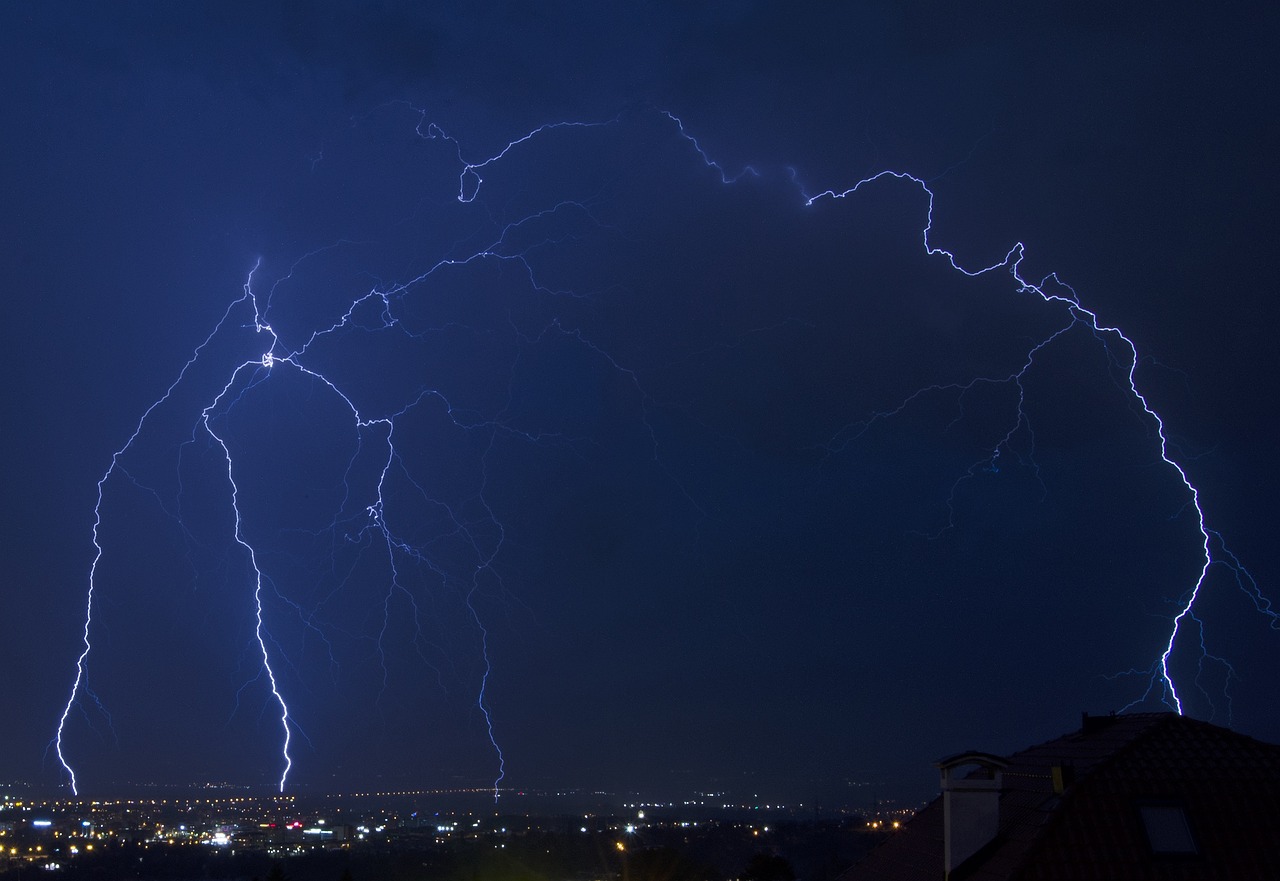
Grounding Systems
When it comes to protecting your home from the fierce power of lightning strikes, grounding systems play a crucial role. Think of a grounding system as the unsung hero of your home's safety, quietly working behind the scenes to redirect the immense energy of a lightning strike safely into the ground. But what exactly is a grounding system, and how does it function? Simply put, a grounding system consists of conductive materials that provide a pathway for electrical currents to flow into the earth, preventing the dangerous surges from affecting your home’s electrical systems.
The effectiveness of a grounding system lies in its design and installation. A well-designed system can significantly reduce the risk of fire and damage to your electrical appliances. During a lightning strike, the electrical energy seeks the path of least resistance, and a properly installed grounding system ensures that this energy is diverted away from your home. Imagine lightning as a wild horse; without proper reins, it can cause chaos. Grounding systems act as those reins, guiding the energy safely into the ground.
To understand how to implement a grounding system effectively, it's essential to consider a few key components:
- Ground Rods: Typically made of copper or galvanized steel, these rods are driven deep into the earth. They serve as the primary point of contact for lightning energy.
- Conductors: These are the wires that connect the ground rods to your home’s electrical system. They must be of adequate gauge to handle the electrical load.
- Grounding Plates or Grids: In some cases, grounding plates or grids may be used instead of, or in addition to, ground rods, particularly in areas with high soil resistivity.
The installation of a grounding system is not a DIY project for the faint-hearted. It requires careful planning and adherence to local building codes. It’s advisable to consult with a professional who specializes in lightning protection systems. They can assess your property and determine the best approach for your specific needs. Proper installation not only ensures safety but also enhances the longevity of your electrical systems.
Moreover, regular maintenance of your grounding system is vital. Over time, soil conditions can change, and corrosion can affect the effectiveness of your grounding rods and conductors. It’s a good practice to have your system inspected every few years, particularly if you live in an area prone to thunderstorms. By doing so, you ensure that your grounding system continues to function optimally, providing peace of mind when the skies darken and the storms roll in.
In conclusion, investing in a robust grounding system is one of the smartest moves you can make to protect your home from lightning strikes. It’s like having an insurance policy that works silently yet effectively. By understanding its components and ensuring proper installation and maintenance, you can significantly reduce the risk of lightning damage, keeping your home and family safe during those electrifying summer storms.
1. What is a grounding system?
A grounding system is a network of conductive materials that provides a safe path for electrical currents, such as those from lightning strikes, to flow into the earth, thereby protecting your home’s electrical systems.
2. How often should I inspect my grounding system?
It is recommended to have your grounding system inspected every few years, especially if you live in a region prone to thunderstorms. Regular maintenance ensures that the system remains effective.
3. Can I install a grounding system myself?
While some homeowners may be tempted to install a grounding system themselves, it is advisable to consult with a professional to ensure that it meets local building codes and functions effectively.
4. What materials are used in grounding systems?
Grounding systems typically use materials like copper or galvanized steel for ground rods, and copper or aluminum for conductors. These materials are chosen for their conductivity and durability.
5. How does a grounding system protect my home?
A grounding system diverts the electrical energy from a lightning strike safely into the ground, preventing it from entering your home’s electrical systems, thereby reducing the risk of fire and damage to appliances.

Surge Protectors
When thunderstorms roll in, the last thing you want is for your home to be vulnerable to the unpredictable forces of nature. One of the most effective ways to safeguard your electrical systems and appliances from the wrath of lightning is through the use of . These devices act as a shield, absorbing excess voltage and redirecting it safely away from your valuable electronics. Think of them as the unsung heroes of your home, quietly working in the background to prevent costly damage that can occur from lightning-induced power surges.
But how exactly do surge protectors work? When a lightning strike occurs, it can generate a sudden spike in electrical energy, which can travel through power lines and into your home. A surge protector detects this spike and diverts the excess voltage away from your devices. This is crucial because many modern appliances, such as televisions, computers, and refrigerators, are sensitive to voltage fluctuations. Without protection, these devices can suffer irreparable damage, leading to expensive repairs or replacements. So, investing in a good surge protector is not just wise; it’s essential!
Now, you might wonder, "How do I choose the right surge protector for my home?" Well, it’s important to consider several factors. First, you’ll want to look at the joule rating of the surge protector, which indicates how much energy it can absorb before failing. The higher the joule rating, the better the protection. Next, check for features like response time and the number of outlets available. A faster response time means your devices are protected more quickly, while multiple outlets allow you to safeguard several devices at once. Additionally, some surge protectors come with built-in circuit breakers or indicators that alert you when it’s time to replace them, adding another layer of convenience.
When it comes to installation, ensuring that your surge protectors are set up correctly is key to maximizing their effectiveness. Here are a few tips:
- Location Matters: Install surge protectors as close to your devices as possible. This minimizes the distance that excess voltage has to travel, reducing the risk of damage.
- Whole-House Protection: Consider investing in a whole-house surge protection system that connects to your electrical panel. This provides a comprehensive shield against surges coming from both external and internal sources.
- Regular Maintenance: Surge protectors don’t last forever. Make it a habit to check them periodically, and replace them if they show signs of wear or if their indicator lights signal that they are no longer effective.
In summary, surge protectors are a vital component of your home’s defense against lightning strikes and electrical surges. By understanding how they work and choosing the right ones for your needs, you can significantly reduce the risk of damage to your valuable electronics. Remember, in the battle against nature’s fury, being prepared is half the victory!
1. Can surge protectors prevent lightning strikes?
No, surge protectors cannot prevent lightning strikes, but they can protect your electrical devices from damage caused by the surges that may follow a strike.
2. How often should I replace my surge protector?
It’s recommended to replace your surge protector every 2-3 years, or sooner if the indicator light shows it’s no longer functioning.
3. Do I need a surge protector for every device?
While it's not mandatory, it is highly advisable to use surge protectors for valuable electronics and appliances to avoid potential damage.
4. What is the difference between a surge protector and a power strip?
A power strip simply provides additional outlets, while a surge protector includes features to absorb and redirect excess voltage, offering protection against surges.
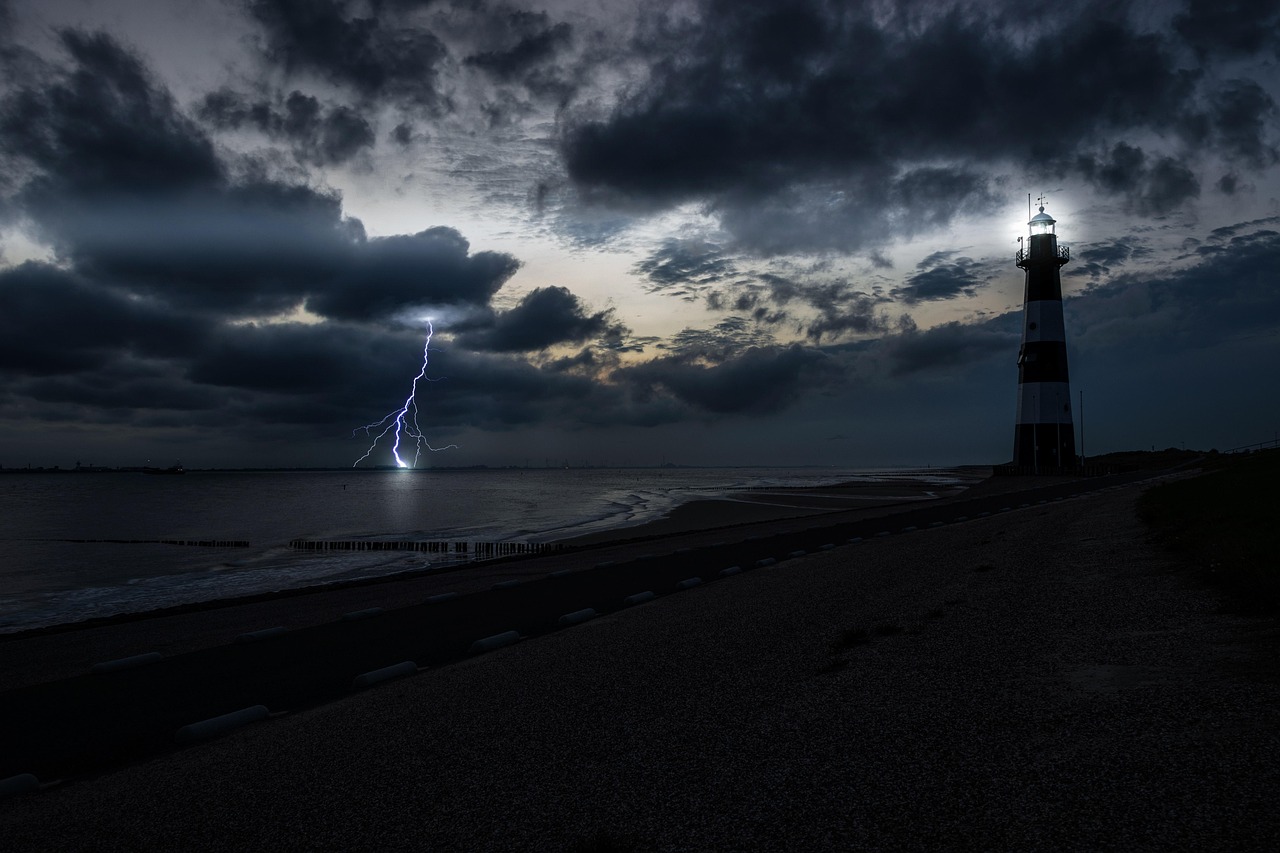
Choosing the Right Surge Protector
When it comes to protecting your home from lightning strikes, selecting the right surge protector can feel like finding a needle in a haystack. With so many options available, how do you know which one is best suited for your needs? First and foremost, it's essential to understand that surge protectors come in various types, each designed to handle different levels of electrical surges. Think of it like choosing the right armor for battle; you want something that can withstand the fiercest attacks while keeping your valuable electronics safe.
One of the first things to consider is the joule rating of the surge protector. This rating indicates how much energy the device can absorb before it fails. A higher joule rating means better protection, so look for surge protectors with ratings of at least 1000 joules for basic home use. If you have high-end electronics, consider investing in a model with a rating of 2000 joules or more. This is akin to choosing a sturdy helmet when going into combat; you want to ensure your most prized possessions are shielded from potential damage.
Next, pay attention to the clamping voltage. This is the voltage level at which the surge protector will start to divert excess voltage away from your devices. A lower clamping voltage means better protection, so aim for models with a clamping voltage of 330V or lower. It’s like setting the alarm on your home security system; the lower you set it, the sooner you’ll be alerted to a potential threat.
Another important factor is the response time of the surge protector. This indicates how quickly the device can react to a surge. Look for surge protectors with a response time of less than 1 nanosecond. This quick reaction time is crucial for protecting sensitive electronics, as even a momentary surge can cause irreversible damage. Think of it as having a fire extinguisher readily available in case of an emergency; the faster you act, the better the outcome.
Additionally, consider the number of outlets that the surge protector offers. If you have multiple devices to protect, a model with eight or more outlets will be beneficial. Some surge protectors even come with USB ports, which can be incredibly handy for charging smartphones and tablets. It’s like having a multi-tool in your toolbox; the more features it has, the more versatile it becomes.
Lastly, don’t overlook the importance of brand reputation and warranties. Opt for well-known brands that offer solid warranties, as this is a good indicator of quality and reliability. A warranty can provide peace of mind, knowing that you’re covered in case of a malfunction. Remember, investing in a good surge protector is like securing a good insurance policy; it’s better to be safe than sorry.
In summary, when choosing the right surge protector, keep these factors in mind: joule rating, clamping voltage, response time, number of outlets, and brand reputation. By taking the time to select the right device, you can ensure that your home and electronics remain safe from the unpredictable nature of lightning strikes and power surges.
- What is a surge protector? A surge protector is a device designed to protect electrical devices from voltage spikes by blocking or shorting excess voltage.
- How do I know if I need a surge protector? If you have sensitive electronics like computers, televisions, or gaming consoles, a surge protector is highly recommended to prevent damage from power surges.
- Can I use a surge protector with a power strip? Yes, but ensure that the power strip itself is rated for surge protection. Not all power strips provide this feature.
- How often should I replace my surge protector? It’s generally advisable to replace surge protectors every 2-3 years, or sooner if they have absorbed a significant surge.

Installation Tips
When it comes to installing surge protectors, there are several crucial factors to consider to ensure that your home is adequately safeguarded against lightning strikes. First and foremost, it's essential to choose a surge protector that matches your electrical needs. Consider the total wattage of the devices you wish to protect, and select a surge protector that can handle that load. It's like choosing the right size of a fire extinguisher; you wouldn’t want to be underprepared in an emergency!
Next, placement is key. Ideally, surge protectors should be installed as close to the devices they protect as possible. This minimizes the distance that a surge has to travel, which can significantly reduce the potential for damage. For instance, if you have a home theater system, it makes sense to place the surge protector right next to it, rather than at the far end of the room. Think of it like putting on a seatbelt; the closer you are to the source of impact, the better your chances of staying safe!
Additionally, ensure that the surge protector is properly grounded. A surge protector without a good ground is like a lifeboat without oars; it won’t do much good when the storm hits. Check your home’s electrical system to confirm that it has a proper grounding system in place. If you’re unsure, it might be wise to consult a qualified electrician to ensure everything is up to code.
Another tip is to consider using whole-house surge protectors in conjunction with point-of-use surge protectors. Whole-house protectors are installed at your electrical panel and can protect all devices within your home, while point-of-use protectors safeguard specific equipment. This dual approach is akin to having both a fire alarm and a fire extinguisher; each serves a unique purpose, but together, they enhance your safety.
Finally, don’t forget about maintenance! Just like you wouldn’t ignore the check engine light in your car, you should regularly check your surge protectors for signs of wear and tear. Some surge protectors have indicator lights that show when they are functioning properly or when they need to be replaced. Keeping an eye on these indicators can save you from a nasty surprise during a thunderstorm.
Q: How often should I replace my surge protectors?
A: It's generally recommended to replace surge protectors every two to three years, or sooner if they show signs of damage or wear.
Q: Do I need a surge protector for every electronic device?
A: While it's not mandatory, using surge protectors for valuable electronics, especially those sensitive to power surges, is highly advisable.
Q: Can a surge protector prevent lightning strikes?
A: No, surge protectors cannot prevent lightning strikes, but they can help protect your devices from the electrical surges that can occur when lightning strikes nearby.
Q: What is the difference between a surge protector and a power strip?
A: A power strip simply provides multiple outlets, while a surge protector includes built-in features to absorb excess voltage and protect connected devices from surges.
Frequently Asked Questions
- What is a lightning rod and how does it work?
A lightning rod is a metal rod mounted on top of a building or structure, designed to protect it from lightning strikes. When lightning strikes, the rod provides a low-resistance path for the electrical current to follow, directing it safely into the ground instead of into the building, thus preventing damage.
- How do I know if my home needs a lightning rod?
If your home is in an area prone to thunderstorms or if it has a tall structure, such as a chimney or a roof, it’s wise to consider installing a lightning rod. Additionally, homes with large trees nearby are at a higher risk, as lightning often strikes the tallest object in the vicinity.
- Are there different types of lightning rods?
Yes, there are several types of lightning rods available, including traditional pointed rods and modern air terminals that can be more effective. The choice depends on your home’s architecture and the level of protection you desire.
- What materials are lightning rods made from?
Lightning rods are typically made from conductive materials like copper or aluminum. These materials are chosen for their durability and ability to conduct electricity, ensuring they effectively redirect lightning strikes.
- How high should a lightning rod be installed?
The height of a lightning rod is crucial for its effectiveness; it should be installed at least a few feet higher than the highest point of your home. This helps ensure that it can intercept lightning strikes before they reach your structure.
- What is a grounding system and why is it important?
A grounding system is a network of conductors that connects the lightning rod to the ground, allowing the electrical current from a lightning strike to dissipate safely. It’s essential for preventing electrical surges that can damage your home’s electrical systems.
- Can surge protectors prevent lightning damage?
Surge protectors are designed to protect your electrical devices from power surges, including those caused by lightning strikes. While they can significantly reduce the risk of damage, they are most effective when used in conjunction with a proper lightning protection system.
- How do I choose the right surge protector for my home?
When selecting a surge protector, consider the total wattage of the devices you want to protect, the clamping voltage, and the response time. Look for surge protectors with a higher joule rating for better protection against surges.
- Are there any maintenance tips for lightning rods and surge protectors?
Regular inspections are key! Check your lightning rods and grounding systems annually for any signs of wear or damage. For surge protectors, ensure they are functioning properly and replace them if they show signs of wear or have absorbed a significant surge.

